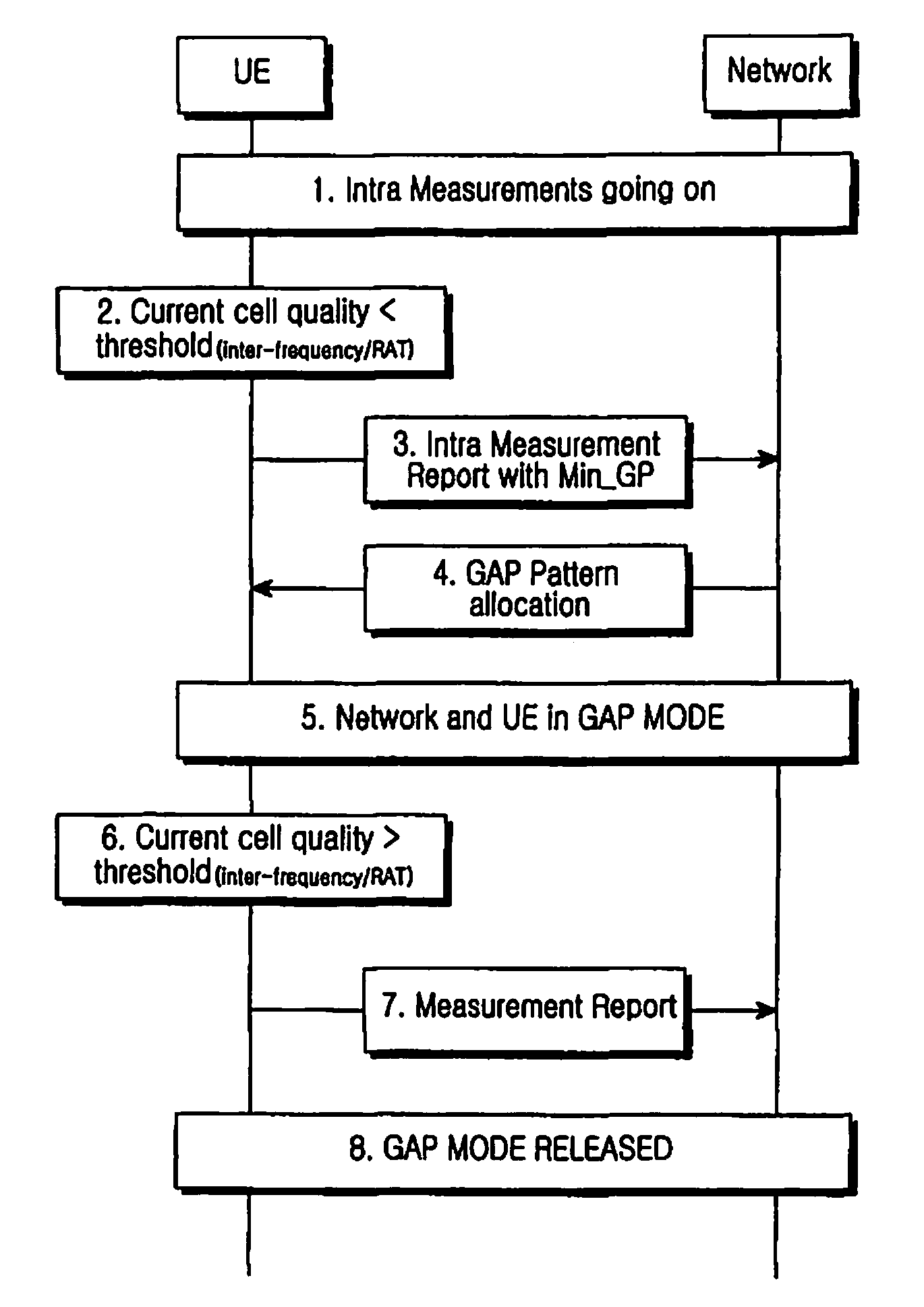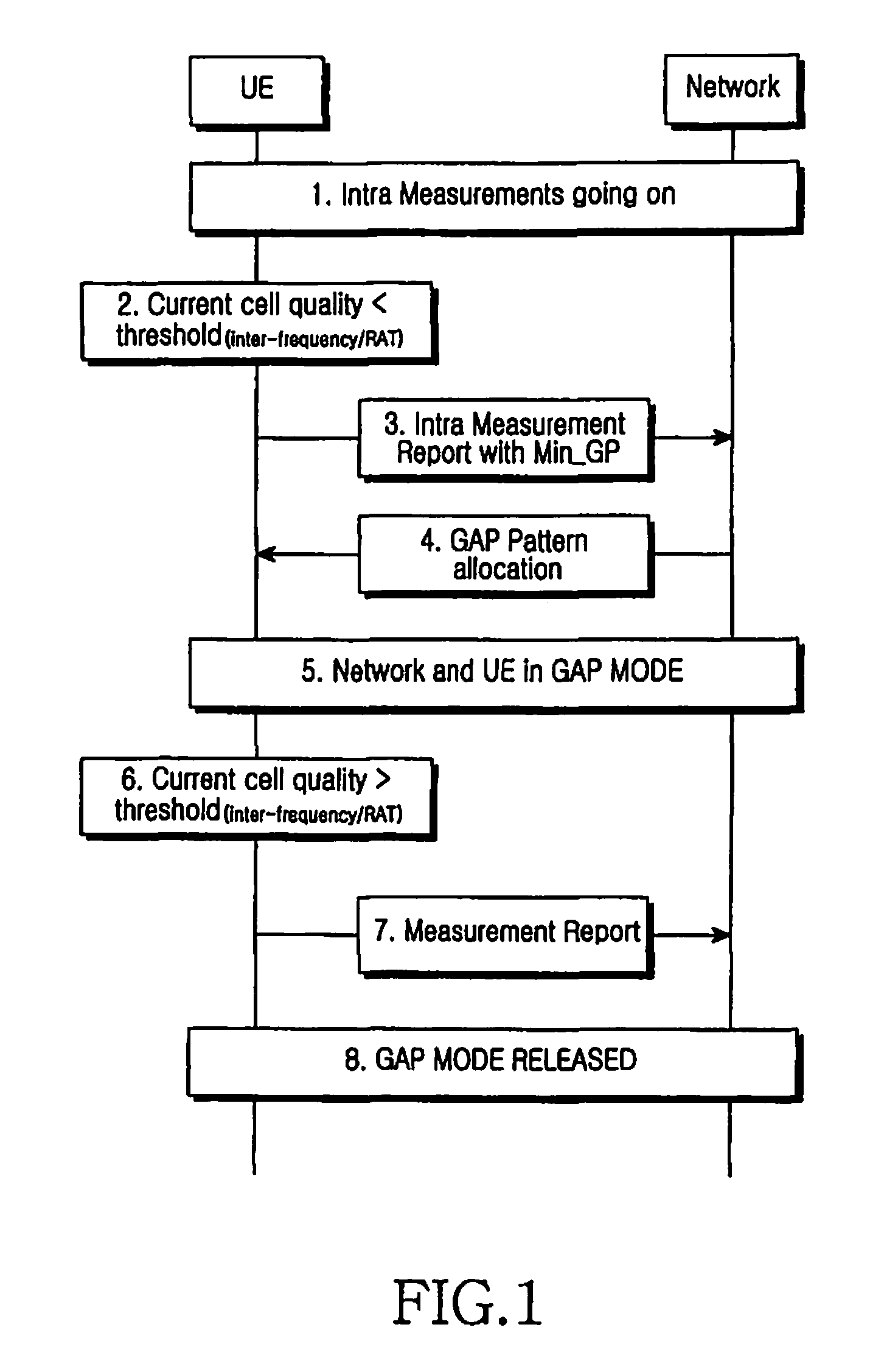Gap scheduling method based on minimum gap patterns in long term evolution system
a long-term evolution and scheduling method technology, applied in the field of long-term evolution systems, can solve the problems of inability to provide gap-assisted and non-gap assisted measurements, lack of known methods for lte systems, and drawbacks of involving latency, so as to improve the handover success rate, prevent the overload of n/w, and reduce the effect of latency requirements
- Summary
- Abstract
- Description
- Claims
- Application Information
AI Technical Summary
Benefits of technology
Problems solved by technology
Method used
Image
Examples
Embodiment Construction
[0022]Preferred embodiments of the present invention will now be described in detail with reference to the annexed drawings. In the following description, a detailed description of known functions and configurations incorporated herein has been omitted for the sake of clarity and conciseness.
[0023]In FIG. 1, the UE is performing the intra frequency measurements (step1). The UE realizes that the present frequency drops below a threshold and that it needs to perform the inter frequency / RAT measurements (step2). The UE decides a gap pattern, that it indicates to the network as the best suited pattern. The UE take into consideration at least its priority for RAT, network topology, handover history and cell rank. After having decided on a gap pattern, the UE indicates the same to the network (step3). The network considers the UE request, and if the cell load and scheduler restrictions allow, the network allocates the same Gap pattern to the UE. However, if the gap pattern cannot be alloc...
PUM
 Login to View More
Login to View More Abstract
Description
Claims
Application Information
 Login to View More
Login to View More - R&D
- Intellectual Property
- Life Sciences
- Materials
- Tech Scout
- Unparalleled Data Quality
- Higher Quality Content
- 60% Fewer Hallucinations
Browse by: Latest US Patents, China's latest patents, Technical Efficacy Thesaurus, Application Domain, Technology Topic, Popular Technical Reports.
© 2025 PatSnap. All rights reserved.Legal|Privacy policy|Modern Slavery Act Transparency Statement|Sitemap|About US| Contact US: help@patsnap.com


